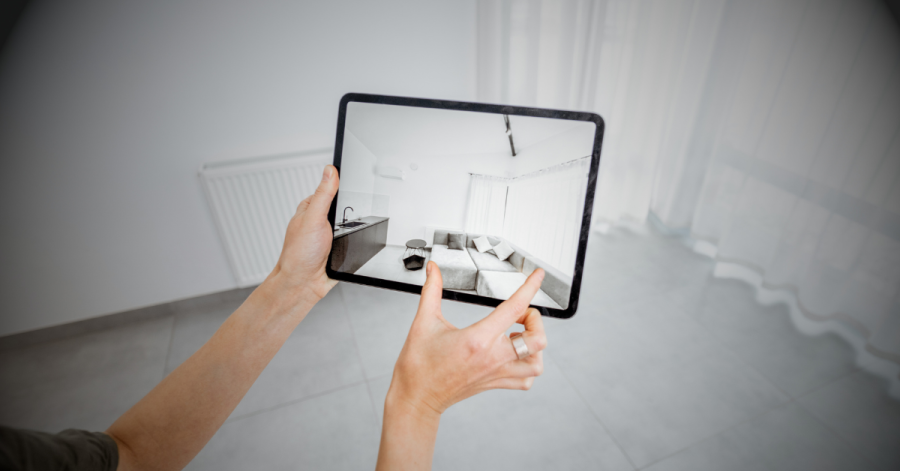Augmented reality is no longer just for games. Industries like real estate, education, live events, and retail are adopting immersive AR to transform customer experiences and operations. A new wave of companies and creators are scaling AR into real-world environments – and changing the way we perceive space, context, and presence in the process.
For years, AR lived in the shadow of gaming: filters on Snapchat, creatures in Pokémon Go, novelty apps that wowed and then faded. But a transformation is quietly taking place. AR is moving out of the playroom and into the boardroom, the classroom, the sales floor, and the construction site. And it’s doing it with intent.
From my perspective, the key to AR’s industrial relevance is a shift in design focus. Gaming played a big role in accelerating AR’s evolution, but if we want it to matter to industries, we need to design for utility, not novelty. The moment people see that AR can solve real-world inefficiencies or drive meaningful engagement that actually converts, it stops being just entertainment. It becomes infrastructure.
Real estate: Selling the invisible
Few industries are as visual – or imagination-dependent – as real estate. Traditionally, developers have relied on scale models, CGI renderings, and walkthroughs to pitch properties. But what if a client could step into a full-scale, unbuilt space on the very lot it will occupy?
AR is making that happen. With immersive overlays, clients can explore future buildings, tweak layouts or finishes, and understand scale and atmosphere long before construction begins. It’s not just about visualizing a property; it’s about feeling it.
Some immersive platforms can now generate these experiences without scanning or pre-mapping spaces, creating real-time previews that work even in complex outdoor environments. This frictionless deployment makes AR not only accessible but also scalable across developments.
Another innovator in the built environment is Resonai, an AR infrastructure startup that transforms real buildings into smart, interactive environments. By embedding a persistent digital layer, they enable navigation, personalization, and data collection – all tied to physical space.
I call it location-based storytelling. It’s not just about the visuals – it’s about emotional context. It’s about letting people feel the life of a place before a single brick is laid.
Live events: The stage is everywhere
Concerts, festivals, and sports events are already sensory-rich experiences. But with AR, they become multi-layered realities.
Modern cinematic AR platforms can transform a smartphone into a portal, turning audiences into participants and venues into living canvases. Performers can appear as larger-than-life avatars, environments shift dynamically, and stories unfold collectively.
I don’t see it as adding digital on top of analog – we’re merging them. For me, it’s about spatial memory, narrative immersion, and creating a sense of collective presence.
Magic Room, a California-based company, is another example of this trend. Their real-time volumetric visualizations allow brands and artists to project immersive content around attendees without any need for headsets, blurring the lines between stage and screen, real and virtual.
Retail: From shelf to story
Retail is ripe for reinvention. Physical stores struggle to meet the personalized expectations set by digital platforms. AR offers a bridge.
Smart mirrors that suggest outfits, shelves that react to user presence, or interactive product stories embedded into the physical space – these aren’t just gadgets. They represent a shift from static shopping to narrative-driven exploration.
Some AR systems can even tie digital interactions to real-world rewards, turning customers into active participants. Early experiments showed that up to 70% of users engaged when incentives were offered through immersive triggers, proving AR’s potential as a conversion engine, not just a curiosity.
Startups like Lightform are also pushing the boundaries with projection mapping tools that turn any physical surface into an interactive display, eliminating the need for mobile devices or wearables.
To me, the future of retail isn’t just about creating experiences – it’s about interactive storytelling. You don’t just walk into a store anymore – you enter a world where every item has a voice, a backstory, a role to play in your day.
Education: Experience is the curriculum
Educators often struggle to bridge the gap between curriculum and curiosity. Even the best lesson plans can fall flat without emotional engagement.
Immersive AR offers a new approach: interactive history lessons where students walk alongside Caesar in ancient Rome, or biology classes where cells bloom in 3D across the classroom floor. These aren’t simulations. They’re spatial experiences that can be deployed in parks, museums, or classrooms with minimal setup.
I’ve always believed the brain encodes experience more powerfully than information. That’s why I focus on building lessons you can actually live inside. That’s when learning stops being passive and becomes unforgettable.
Curiscope’s Virtuali-Tee is one example: a wearable that lets students explore human anatomy via AR. It demonstrates how learning outcomes improve when students are no longer passive observers, but active participants.
Tourism and museums: Time travel as a service
Modern travelers want context, not just pictures. AR can overlay lost histories on real locations, creating immersive timelines that let visitors see beyond the ruins.
Tourists at heritage sites can now watch reconstructed cities rise from the dust, view re-enacted battles, or explore forgotten cultures – without needing a museum guide or headset. These cinematic experiences are helping cultural institutions boost engagement while protecting fragile environments from overuse.
TimeLooper, for instance, provides time-travel AR experiences at iconic sites like the Roman Colosseum and Tower of London, allowing tourists to relive key moments in history where they actually occurred.
You don’t need a voiceover when you can watch history unfold around you. That’s the power of immersive tech – the world turns into a living archive.
The infrastructure of immersion
What’s changing now isn’t just the technology – it’s the strategy. Historically, AR solutions were siloed: one device, one space, one purpose. But future-ready systems are being designed to work horizontally, with a unified logic layer that adapts across sectors.
Every time I build for a concert or a historical site, I’m not starting from scratch – I’m refining a universal spatial toolkit. Each project adds another layer to something bigger and more adaptable. This approach means that a single user could experience AR-enhanced retail, education, and tourism environments within a consistent framework, accelerating adoption and reducing friction.
Challenges: Friction, fragmentation, and trust
Despite the potential, significant challenges remain. Spatial data standards are still evolving. Device fragmentation is a constant hurdle. Many industries lack internal expertise to deploy AR meaningfully.
For me, it’s not enough to just build technology. I believe you have to eliminate barriers, ensuring zero-friction onboarding, intuitive design, and a deep respect for user trust. Privacy is a central concern. AR systems can collect layers of contextual, behavioral, and spatial data. Transparent practices, opt-in protocols, and strong user control must be baked into every experience.
We’re designing for presence, not surveillance. Our job is to enhance perception, not hijack it.
There’s also a cultural shift we need to make. We have to stop selling AR as ‘the future.’ It’s already here. My role is to help people see it – without friction or fear.
The leap from gimmick to format
The leap from gimmick to infrastructure is already underway. Forward-looking businesses are no longer asking if they should explore AR—they’re asking how soon.
The winners will be those who stop thinking of AR as a feature and start designing with it as a format. Not as an app, but as a new layer of interaction for the environments we already inhabit.
Because the real question isn’t whether AR will change how business works. It’s whether your business will change fast enough to use it.








